
Exercises for Plantar Fasciitis
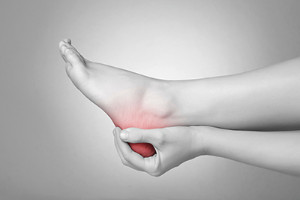 Plantar fasciitis and heel pain can both be very painful and uncomfortable. While stretching won’t eliminate the pain, it can help mitigate it. Some stretches that you can perform include the quadruped stretch, isolated calf raise, and even a foot massage. Before you do these, ask your podiatrist whether stretching is right for you. To do a quadruped stretch, get on all fours and spread your toes on the floor. Next, lean back slowly and sit on your heels while holding this position for 30 seconds. For isolated calf raises, lunge with your left leg forward and right leg back. Then, with your right foot flat, lift up onto the ball of your right foot. Do this for 10-15 reps on each side and for three repetitions. To massage your foot, push down on the center of the bottom of the foot and use a circular motion while applying pressure. These stretches will not eliminate plantar fasciitis and are only meant to temporarily reduce pain. If you have heel pain, it is recommended that you see a podiatrist who can offer effective treatment strategies.
Plantar fasciitis and heel pain can both be very painful and uncomfortable. While stretching won’t eliminate the pain, it can help mitigate it. Some stretches that you can perform include the quadruped stretch, isolated calf raise, and even a foot massage. Before you do these, ask your podiatrist whether stretching is right for you. To do a quadruped stretch, get on all fours and spread your toes on the floor. Next, lean back slowly and sit on your heels while holding this position for 30 seconds. For isolated calf raises, lunge with your left leg forward and right leg back. Then, with your right foot flat, lift up onto the ball of your right foot. Do this for 10-15 reps on each side and for three repetitions. To massage your foot, push down on the center of the bottom of the foot and use a circular motion while applying pressure. These stretches will not eliminate plantar fasciitis and are only meant to temporarily reduce pain. If you have heel pain, it is recommended that you see a podiatrist who can offer effective treatment strategies.
Plantar fasciitis can be very painful and inconvenient. If you are experiencing heel pain or symptoms of plantar fasciitis, contact Dr. Mark Gagnon from Advanced Podiatry. Our doctor can provide the care you need to keep you pain-free and on your feet.
What Is Plantar Fasciitis?
Plantar fasciitis is the inflammation of the thick band of tissue that runs along the bottom of your foot, known as the plantar fascia, and causes mild to severe heel pain.
What Causes Plantar Fasciitis?
- Excessive running
- Non-supportive shoes
- Overpronation
- Repeated stretching and tearing of the plantar fascia
How Can It Be Treated?
- Conservative measures – anti-inflammatories, ice packs, stretching exercises, physical therapy, orthotic devices
- Shockwave therapy – sound waves are sent to the affected area to facilitate healing and are usually used for chronic cases of plantar fasciitis
- Surgery – usually only used as a last resort when all else fails. The plantar fascia can be surgically detached from the heel
While very treatable, plantar fasciitis is definitely not something that should be ignored. Especially in severe cases, speaking to your doctor right away is highly recommended to avoid complications and severe heel pain. Your podiatrist can work with you to provide the appropriate treatment options tailored to your condition.
If you have any questions please feel free to contact one of our offices located in Crestwood, Orland Park, and Summit, IL . We offer the newest diagnostic and treatment technologies for all your foot and ankle needs.
Caring for Your Diabetic Child’s Feet
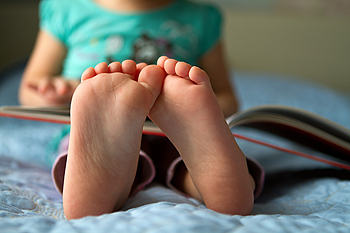 Diabetes presents a number of problems for those who have it. This is especially true for children, who are more likely to sustain a foot injury from playing. Due to decreased sensitivity, a child may not realize they have a wound and not tell their parent. Coupled with poor blood circulation, the wound may not heal and may become infected; this could be very dangerous and, in extreme cases, potentially result in amputation. Both parents and children should know what to look for and how to care for diabetic feet. This includes doing daily foot inspections for wounds or any abnormal signs. Diabetic children should wash their feet with warm water and make sure to dry them properly. Make sure to avoid extremely hot and cold environments, and check the water temperature first before washing. Children should also avoid walking barefoot. Be sure to inspect shoes for any objects inside and to ensure the interior is smooth. Finally, seeing a podiatrist for an examination several times a year is highly recommended.
Diabetes presents a number of problems for those who have it. This is especially true for children, who are more likely to sustain a foot injury from playing. Due to decreased sensitivity, a child may not realize they have a wound and not tell their parent. Coupled with poor blood circulation, the wound may not heal and may become infected; this could be very dangerous and, in extreme cases, potentially result in amputation. Both parents and children should know what to look for and how to care for diabetic feet. This includes doing daily foot inspections for wounds or any abnormal signs. Diabetic children should wash their feet with warm water and make sure to dry them properly. Make sure to avoid extremely hot and cold environments, and check the water temperature first before washing. Children should also avoid walking barefoot. Be sure to inspect shoes for any objects inside and to ensure the interior is smooth. Finally, seeing a podiatrist for an examination several times a year is highly recommended.
Making sure that your children maintain good foot health is very important as they grow. If you have any questions, contact Dr. Mark Gagnon of Advanced Podiatry. Our doctor can provide the care you need to keep you pain-free and on your feet.
Keeping Children's Feet Healthy
Having healthy feet during childhood can help prevent medical problems later in life, namely in the back and legs. As children grow, their feet require different types of care. Here are some things to consider...
Although babies do not walk yet, it is still very important to take care of their feet.
Avoid putting tight shoes or socks on his or her feet.
Allow the baby to stretch and kick his or her feet to feel comfortable.
As a toddler, kids are now on the move and begin to develop differently. At this age, toddlers are getting a feel for walking, so don’t be alarmed if your toddler is unsteady or ‘walks funny’.
As your child gets older, it is important to teach them how to take care of their feet.
Show them proper hygiene to prevent infections such as fungus.
Be watchful for any pain or injury.
Have all injuries checked by a doctor as soon as possible.
Comfortable, protective shoes should always be worn, especially at play.
If you have any questions please feel free to contact one of our offices located in Crestwood, Orland Park, and Summit, IL . We offer the newest diagnostic and treatment technologies for all your foot and ankle needs.
Preventing Foot Injuries for the Active Elderly
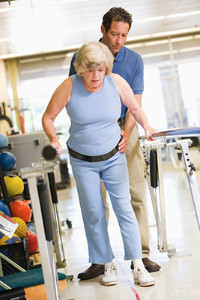 Compared to younger athletes, elderly athletes are more likely to suffer a foot injury as they get older. Foot conditions and injuries that affect all ages include plantar fasciitis, ankle sprains, stress fractures, and Morton’s neuroma. While the sport one plays can vary, there are certain things that athletes of all ages can do to prevent foot injuries. Wearing an ankle brace can help prevent sprains, while quality footwear can prevent foot pain. Proper arch support can be the difference between comfort and discomfort. Custom orthotics may be necessary for some people who have flat or unsupported feet. Stretching is vital, and everyone should stretch not only before an activity but after as well. Finally, keeping your feet dry by changing socks and using foot powder can prevent conditions like athlete’s foot. If you are an elderly athlete, be sure to see a podiatrist to see if certain activities are right for you.
Compared to younger athletes, elderly athletes are more likely to suffer a foot injury as they get older. Foot conditions and injuries that affect all ages include plantar fasciitis, ankle sprains, stress fractures, and Morton’s neuroma. While the sport one plays can vary, there are certain things that athletes of all ages can do to prevent foot injuries. Wearing an ankle brace can help prevent sprains, while quality footwear can prevent foot pain. Proper arch support can be the difference between comfort and discomfort. Custom orthotics may be necessary for some people who have flat or unsupported feet. Stretching is vital, and everyone should stretch not only before an activity but after as well. Finally, keeping your feet dry by changing socks and using foot powder can prevent conditions like athlete’s foot. If you are an elderly athlete, be sure to see a podiatrist to see if certain activities are right for you.
Proper foot care is something many older adults forget to consider. If you have any concerns about your feet and ankles, contact Dr. Mark Gagnon from Advanced Podiatry. Our doctor can provide the care you need to keep you pain-free and on your feet.
The Elderly and Their Feet
As we age we start to notice many changes in our body, but the elder population may not notice them right away. Medical conditions may prevent the elderly to take notice of their foot health right away. Poor vision is a lead contributor to not taking action for the elderly.
Common Conditions
- Neuropathy – can reduce feeling in the feet and can hide many life-threatening medical conditions.
- Reduced flexibility – prevents the ability of proper toenail trimming, and foot cleaning. If left untreated, it may lead to further medical issues.
- Foot sores – amongst the older population can be serious before they are discovered. Some of the problematic conditions they may face are:
- Gouging toenails affecting nearby toe
- Shoes that don’t fit properly
- Pressure sores
- Loss of circulation in legs & feet
- Edema & swelling of feet and ankles
Susceptible Infections
Diabetes and poor circulation can cause general loss of sensitivity over the years, turning a simple cut into a serious issue.
If you have any questions please feel free to contact one of our offices located in Crestwood, Orland Park, and Summit, IL . We offer the newest diagnostic and treatment technologies for all your foot and ankle needs.
Taking Care of Minor Foot Wounds In Diabetics
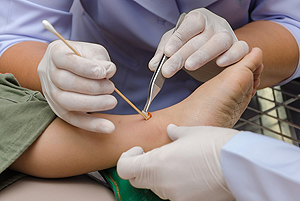 A major problem among those who suffer from diabetes is poor blood circulation and nerve damage. This can lead to diabetics developing foot ulcers that don’t heal properly or quickly. In more severe cases in which the wound has become infected, this can lead to amputation. The first step is to keep the diabetes in check by observing blood glucose levels and staying healthy. Inspecting the foot daily is important because nerve damage can prevent a diabetic from realizing they have an ulcer. Foot inspections can help diabetics discover a wound early so they can alert a podiatrist. If there is a wound, diabetics should wash the wound with saline or clean water. Applying an antibiotic ointment and covering with a bandage is also important. However these solutions are only temporary, and you should see a podiatrist if you have a foot ulcer.
A major problem among those who suffer from diabetes is poor blood circulation and nerve damage. This can lead to diabetics developing foot ulcers that don’t heal properly or quickly. In more severe cases in which the wound has become infected, this can lead to amputation. The first step is to keep the diabetes in check by observing blood glucose levels and staying healthy. Inspecting the foot daily is important because nerve damage can prevent a diabetic from realizing they have an ulcer. Foot inspections can help diabetics discover a wound early so they can alert a podiatrist. If there is a wound, diabetics should wash the wound with saline or clean water. Applying an antibiotic ointment and covering with a bandage is also important. However these solutions are only temporary, and you should see a podiatrist if you have a foot ulcer.
Diabetic foot care is important in preventing foot ailments such as ulcers. If you are suffering from diabetes or have any other concerns about your feet, contact Dr. Mark Gagnon from Advanced Podiatry. Our doctor can provide the care you need to keep you pain-free and on your feet.
Diabetic Foot Care
Diabetes affects millions of people every year. The condition can damage blood vessels in many parts of the body, especially the feet. Because of this, taking care of your feet is essential if you have diabetes, and having a podiatrist help monitor your foot health is highly recommended.
The Importance of Caring for Your Feet
- Routinely inspect your feet for bruises or sores.
- Wear socks that fit your feet comfortably.
- Wear comfortable shoes that provide adequate support.
Patients with diabetes should have their doctor monitor their blood levels, as blood sugar levels play such a huge role in diabetic care. Monitoring these levels on a regular basis is highly advised.
It is always best to inform your healthcare professional of any concerns you may have regarding your feet, especially for diabetic patients. Early treatment and routine foot examinations are keys to maintaining proper health, especially because severe complications can arise if proper treatment is not applied.
If you have any questions please feel free to contact one of our offices located in Crestwood, Orland Park, and Summit, IL . We offer the newest diagnostic and treatment technologies for all your foot and ankle needs.
How to Get a Good Foot Stretch Before You Dance
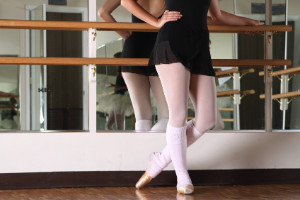 Many dancers focus primarily on stretching out tight muscles in their feet before they dance. While this is important, it is also recommended that dancers stretch their calves and make sure that they have good flex and pointe in their feet and ankles. Using an exercise band while seated on the floor is considered to be a great way to both stretch and workout your foot and calf muscles. Just be sure to stretch under the guidance of an instructor. If you are feeling pain however, be sure to stop exercising and stretching and see a podiatrist who can help your foot heal so you can get back out on the dance floor.
Many dancers focus primarily on stretching out tight muscles in their feet before they dance. While this is important, it is also recommended that dancers stretch their calves and make sure that they have good flex and pointe in their feet and ankles. Using an exercise band while seated on the floor is considered to be a great way to both stretch and workout your foot and calf muscles. Just be sure to stretch under the guidance of an instructor. If you are feeling pain however, be sure to stop exercising and stretching and see a podiatrist who can help your foot heal so you can get back out on the dance floor.
Stretching the feet is a great way to prevent injuries. If you have any concerns with your feet consult with Dr. Mark Gagnon from Advanced Podiatry. Our doctor will assess your condition and provide you with quality foot and ankle treatment.
Stretching the Feet
Being the backbone of the body, the feet carry your entire weight and can easily become overexerted, causing cramps and pain. As with any body part, stretching your feet can serve many benefits. From increasing flexibility to even providing some pain relief, be sure to give your feet a stretch from time to time. This is especially important for athletes or anyone performing aerobic exercises, but anyone experiencing foot pain or is on their feet constantly should also engage in this practice.
Great ways to stretch your feet:
- Crossing one leg over the others and carefully pull your toes back. Do 10-20 repetitions and repeat the process for each foot
- Face a wall with your arms out and hands flat against the wall. Step back with one foot and keep it flat on the floor while moving the other leg forward. Lean towards the wall until you feel a stretch. Hold for 30 seconds and perform 10 repetitions for each foot
- Be sure not to overextend or push your limbs too hard or you could risk pulling or straining your muscle
Individuals who tend to their feet by regular stretching every day should be able to minimize foot pain and prevent new problems from arising.
If you have any questions, please feel free to contact one of our offices located in Crestwood, Orland Park, and Summit, IL . We offer the newest diagnostic and treatment technologies for all your foot care needs.
How to Avoid Common Running Injuries
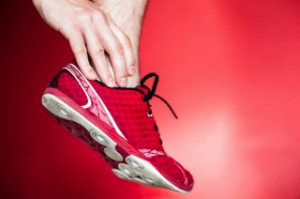 Summer is the most popular time of the year to go outside and become more active. While exercising is beneficial in order to get your body in shape, you are also becoming more susceptible to running injuries. Ankle sprains, stress fractures, and heel pain can all be preventable injuries if you take precautions before jumping into your workout routine. Unsurprisingly, one of the most common sources of running injuries happens to be improper footwear. You should always make sure that the shoes you buy provide enough support for your feet, and are made from a breathable material. Buying shoes that are made for the type of activity you will be performing can also help in avoiding injury. For example, you should buy running shoes if you want to go for a run, and walking shoes if you plan on walking.
Summer is the most popular time of the year to go outside and become more active. While exercising is beneficial in order to get your body in shape, you are also becoming more susceptible to running injuries. Ankle sprains, stress fractures, and heel pain can all be preventable injuries if you take precautions before jumping into your workout routine. Unsurprisingly, one of the most common sources of running injuries happens to be improper footwear. You should always make sure that the shoes you buy provide enough support for your feet, and are made from a breathable material. Buying shoes that are made for the type of activity you will be performing can also help in avoiding injury. For example, you should buy running shoes if you want to go for a run, and walking shoes if you plan on walking.
Exercising your feet regularly with the proper foot wear is a great way to prevent injuries. If you have any concerns about your feet, contact Dr. Mark Gagnon of Advanced Podiatry. Our doctor will treat your foot and ankle needs.
How to Prevent Running Injuries
Many common running injuries are caused by overuse and overtraining. When the back of the kneecap starts wearing out and starts causing pain in your knee, this is commonly referred to as runner’s knee. Runner’s knee is a decrease in strength in your quadriceps and can occur if you’re not wearing properly fitted or supporting shoes. To prevent runner’s knee, focusing on hip strengthening is a good idea, as well as strengthening your quads to keep the kneecaps aligned.
What Are Some Causes of Running Injuries?
- One cause of a common running injury is called iliotibial band syndrome.
- Plantar fasciitis is also another common injury.
- Stress fractures can occur from overtraining, lack of calcium, or even your running style.
Best Ways to Prevent Running Injuries
- Wear footwear that fits properly and suits your running needs.
- Running shoes are the only protective gear that runners have to safeguard them from injury.
- Make a training schedule. Adding strengthening exercises as well as regular stretching can help keep you strong and limber and can lessen the possibility of injuries.
- Stretching keeps muscles limber; this will help you gain better flexibility.
If you have any questions please feel free to contact one of our offices located in Crestwood, Orland Park, and Summit, IL . We offer the newest diagnostic and treatment technologies for all your foot and ankle needs.
Tips for Dealing with Athlete’s Foot
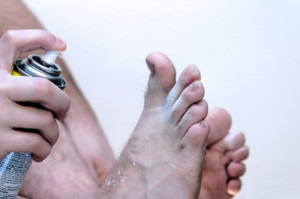 Athlete’s foot is a contagious fungal infection that can spread to the toenails and hands. The condition itself may be hard to cure, and it can be caught by direct contact with someone who has it or by touching surfaces that have been contaminated with it. The fungus has been found to thrive in damp environments such as showers, locker room floors, and around swimming pools. If you want to avoid getting athlete’s foot, you should wash your feet with soap and water and dry them thoroughly, especially between the toes. You also should avoid sharing your socks with other people since this can help spread the fungus. Lastly, be sure to change your socks when your feet get sweaty, and wear shoes that are made from a breathable material.
Athlete’s foot is a contagious fungal infection that can spread to the toenails and hands. The condition itself may be hard to cure, and it can be caught by direct contact with someone who has it or by touching surfaces that have been contaminated with it. The fungus has been found to thrive in damp environments such as showers, locker room floors, and around swimming pools. If you want to avoid getting athlete’s foot, you should wash your feet with soap and water and dry them thoroughly, especially between the toes. You also should avoid sharing your socks with other people since this can help spread the fungus. Lastly, be sure to change your socks when your feet get sweaty, and wear shoes that are made from a breathable material.
Athlete’s foot is an inconvenient condition that can be easily reduced with the proper treatment. If you have any concerns about your feet and ankles, contact Dr. Mark Gagnon from Advanced Podiatry. Our doctor will treat your foot and ankle needs.
Athlete’s Foot: The Sole Story
Athlete's foot, also known as tinea pedis, can be an extremely contagious foot infection. It is commonly contracted in public changing areas and bathrooms, dormitory style living quarters, around locker rooms and public swimming pools, or anywhere your feet often come into contact with other people.
Solutions to Combat Athlete’s Foot
- Hydrate your feet by using lotion
- Exfoliate
- Buff off nails
- Use of anti-fungal products
- Examine your feet and visit your doctor if any suspicious blisters or cuts develop
Athlete’s foot can cause many irritating symptoms such as dry and flaking skin, itching, and redness. Some more severe symptoms can include bleeding and cracked skin, intense itching and burning, and even pain when walking. In the worst cases, Athlete’s foot can cause blistering as well. Speak to your podiatrist for a better understanding of the different causes of Athlete’s foot, as well as help in determining which treatment options are best for you.
If you have any questions please feel free to contact one of our offices located in Crestwood, Orland Park, and Summit, IL . We offer the newest diagnostic and treatment technologies for all your foot and ankle needs.
Why it is Important to See a Podiatrist
 While many people tend to be concerned with the appearance of their toenails, it is crucial that the overall health of your feet is taken care of as well. This is why it is important that you have a podiatrist who can treat all your foot and ankle related problems. One of the more common problems that people go to a podiatrist for are ingrown toenails. The fact that podiatrists specialize in treating feet allows them to treat ingrown toenails with minimal pain. One podiatrist says, “I see countless people who were traumatized when treated elsewhere. This breaks my heart every time one of these patients walks into my office.” Seeking help from a podiatrist may be very beneficial when you are experiencing issues with your feet.
While many people tend to be concerned with the appearance of their toenails, it is crucial that the overall health of your feet is taken care of as well. This is why it is important that you have a podiatrist who can treat all your foot and ankle related problems. One of the more common problems that people go to a podiatrist for are ingrown toenails. The fact that podiatrists specialize in treating feet allows them to treat ingrown toenails with minimal pain. One podiatrist says, “I see countless people who were traumatized when treated elsewhere. This breaks my heart every time one of these patients walks into my office.” Seeking help from a podiatrist may be very beneficial when you are experiencing issues with your feet.
If you are experiencing pain in the feet or ankles, don’t join the stubborn majority refusing treatment. Feel free to contact Dr. Mark Gagnon from Advanced Podiatry. Our doctor can provide the care you need to keep you pain-free and on your feet.
What Is a Podiatrist?
Someone would seek the care of a podiatrist if they have suffered a foot injury or have common foot ailments such as heal spurs, bunions, arch problems, deformities, ingrown toenails, corns, foot and ankle problems, etc.
Podiatric Treatment
A podiatrist will treat the problematic areas of the feet, ankle or lower leg by prescribing the following:
- Physical therapy
- Drugs
- Orthotic inserts or soles
- Surgery on lower extremity fractures
A common podiatric procedure a podiatrist will use is a scanner or force plate which will allow the podiatrist to know the designs of orthotics. Patients are then told to follow a series of tasks to complete the treatment. The computer will scan the foot a see which areas show weight distribution and pressure points. The podiatrist will read the analysis and then determine which treatment plans are available.
If you have any questions please feel free to contact one of our offices located in Crestwood, Orland Park, and Summit, IL . We offer the newest diagnostic and treatment technologies for all your foot and ankle needs.
Tips for Healthy Feet
 Some of the most common complaints people have with their feet are pain, ingrown toenails, cracked heels, and fungus. When it comes to foot pain, many people are unaware that flat shoes can be just as bad as high heels. Flats do not offer any support for the foot, which can cause those who wear them to experience a lot of pain. Ingrown toenails are often the result of cutting your nails incorrectly; instead of cutting your nails in a rounded shape, you should cut them straight across. If you are trying to cure your cracked heels, you should know that they are caused by a lack of moisture in the feet. A helpful tip is to always moisturize and treat your feet the same way you would want to treat the skin on your face. If you want to get rid of toenail fungus, you should always treat it in its early stages, instead of letting it progress into something much worse. If you have any questions about any of these common foot issues, you should speak to a podiatrist right away.
Some of the most common complaints people have with their feet are pain, ingrown toenails, cracked heels, and fungus. When it comes to foot pain, many people are unaware that flat shoes can be just as bad as high heels. Flats do not offer any support for the foot, which can cause those who wear them to experience a lot of pain. Ingrown toenails are often the result of cutting your nails incorrectly; instead of cutting your nails in a rounded shape, you should cut them straight across. If you are trying to cure your cracked heels, you should know that they are caused by a lack of moisture in the feet. A helpful tip is to always moisturize and treat your feet the same way you would want to treat the skin on your face. If you want to get rid of toenail fungus, you should always treat it in its early stages, instead of letting it progress into something much worse. If you have any questions about any of these common foot issues, you should speak to a podiatrist right away.
Everyday foot care is very important to prevent infection and other foot ailments. If you need your feet checked, contact Dr. Mark Gagnon from Advanced Podiatry. Our doctor can provide the care you need to keep you pain-free and on your feet.
Everyday Foot Care
Often, people take care of their bodies, face and hair more so than they do for their feet. But the feet are a very important aspect of our bodies, and one that we should pay more attention to. Without our feet, we would not be able to perform most daily tasks.
It is best to check your feet regularly to make sure there are no new bruises or cuts that you may not have noticed before. For dry feet, moisturizer can easily be a remedy and can be applied as often as necessary to the affected areas. Wearing shoes that fit well can also help you maintain good foot health, as well as making it easier to walk and do daily activities without the stress or pain of ill-fitting shoes, high heels, or even flip flops. Wearing clean socks with closed shoes is important to ensure that sweat and bacteria do not accumulate within the shoe. Clean socks help to prevent Athlete’s foot, fungi problems, bad odors, and can absorb sweat.
If you have any questions please feel free to contact one of our offices located in Crestwood, Orland Park, and Summit, IL . We offer the newest diagnostic and treatment technologies for all your foot and ankle needs.
How to Avoid Getting Blisters
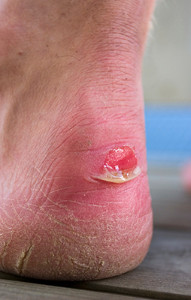 Although you may be excited to try on your brand new pair of shoes, you should be careful to avoid getting blisters while wearing them. Blisters are not only uncomfortable, but they often force you to walk in an unnatural way to compensate for the pain they cause. Fortunately, there are some tips you can follow to avoid getting blisters and having to deal with them while wearing your new kicks. One tip is to walk around in your new shoes at home prior to wearing them out in public. Wearing your shoes at home will help loosen them up so that the shoes are already broken-in when you are ready for regular use. Another tip is to make sure that you are wearing proper socks. While most people tend to wear ankle socks, they offer very little protection for your feet compared to longer ones. You should also make sure that the socks you wear are made up of a material that dries quickly. A material like cotton, which tends to stay damp for a while, may soften the skin and make you more susceptible to blisters.
Although you may be excited to try on your brand new pair of shoes, you should be careful to avoid getting blisters while wearing them. Blisters are not only uncomfortable, but they often force you to walk in an unnatural way to compensate for the pain they cause. Fortunately, there are some tips you can follow to avoid getting blisters and having to deal with them while wearing your new kicks. One tip is to walk around in your new shoes at home prior to wearing them out in public. Wearing your shoes at home will help loosen them up so that the shoes are already broken-in when you are ready for regular use. Another tip is to make sure that you are wearing proper socks. While most people tend to wear ankle socks, they offer very little protection for your feet compared to longer ones. You should also make sure that the socks you wear are made up of a material that dries quickly. A material like cotton, which tends to stay damp for a while, may soften the skin and make you more susceptible to blisters.
Blisters are prone to making everyday activities extremely uncomfortable. If your feet are hurting, contact Dr. Mark Gagnon of Advanced Podiatry. Our doctor can provide the care you need to keep you pain-free and on your feet.
Foot Blisters
Foot blisters develop as a result of constantly wearing tight or ill-fitting footwear. This happens due to the constant rubbing from the shoe, which can often lead to pain.
What Are Foot Blisters?
A foot blister is a small fluid-filled pocket that forms on the upper-most layer of the skin. Blisters are filled with clear fluid and can lead to blood drainage or pus if the area becomes infected.
How Do Blisters Form?
Blisters on the feet are often the result of constant friction of skin and material, usually by shoe rubbing. Walking in sandals, boots, or shoes that don’t fit properly for long periods of time can result in a blister. Having consistent foot moisture and humidity can easily lead to blister formation.
Prevention & Treatment
It is important to properly care for the affected area in order to prevent infection and ease the pain. Do not lance the blister and use a Band-Aid to provide pain relief. Also, be sure to keep your feet dry and wear proper fitting shoes. If you see blood or pus in a blister, seek assistance from a podiatrist.
If you have any questions, please feel free to contact one of our offices located in Crestwood, Orland Park, and Summit, IL . We offer the newest diagnostic and treatment technologies for all your foot care needs.
